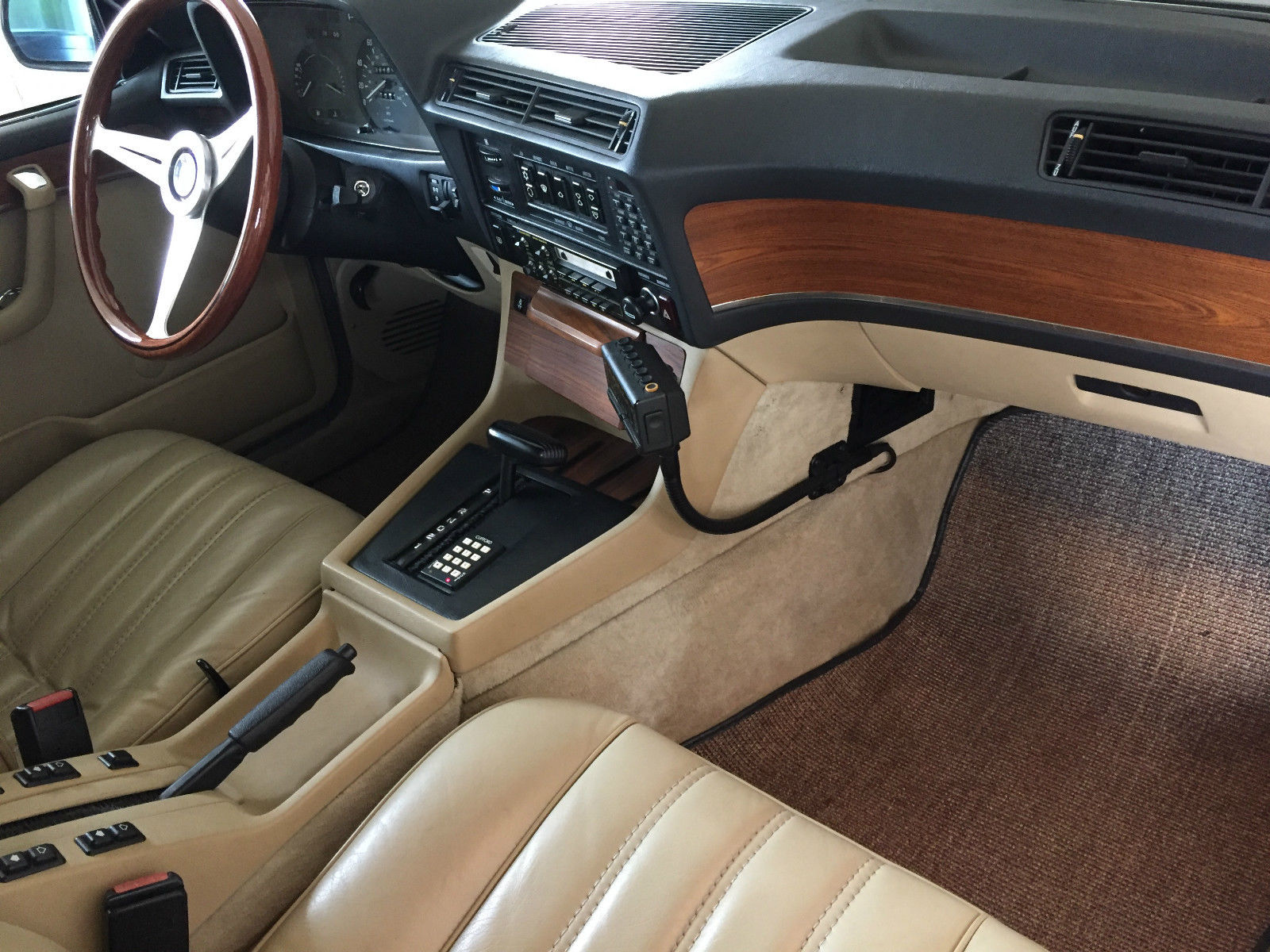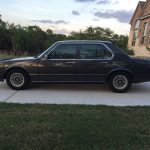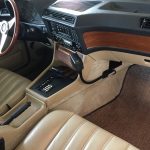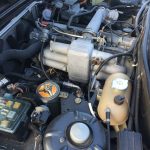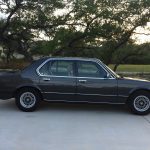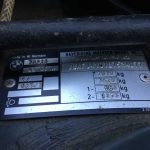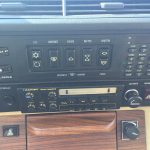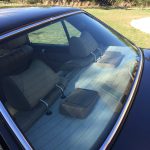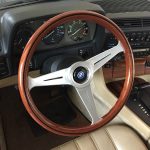To go up against the established Alpha executive from Germany – the S-Class Mercedes-Benz – BMW’s engineers had to think outside of the box. It wasn’t simply good enough to mimic the go-to large luxury sedan. They’d have to outperform it, to be better than Stuttgart’s best. That was a tall order for the Munich firm, since its last truly large sedans were the 501/2 series cars; the Baroque Angels of the early 1950s. Though they launched at roughly the same time as BMW’s microcar craze, they were really holdovers from another era. The same wouldn’t work in the late 1970s, but primed with the success of their 5- and 6-series models, BMW was ready to face the challenge.
Though the E3 had offered a sizeable sedan, the new E23 really stretched BMW’s platforms. The new 7-seres was 6 inches longer overall, most of which fell in a longer wheelbase versus the E3. It was also wider by a few inches and lower, too. Paul Bracq again provided the styling and it was nothing surprising; it carried the torch of many of the design elements of the 3-, 5- and 6-series cars, and that certainly wasn’t a bad thing. But what BMW hoped would help to set it apart from the competition was technology and performance, along with a high-level of material quality in the cabin. Options included Buffalo leather, an on-board computer system, anti-lock brakes, heated and reclining power seats front and rear, and even an airbag late in the run; standard fare today, but way ahead of the curve in the late 1970s and early 1980s. BMW matched this technology with a thoroughly modern driver-oriented cockpit which made the W116 Mercedes-Benz competition feel immediately antiquated.
Where the E23 really established itself, though, was in keeping with the “driving machine” motto of the company. This was a performance sedan, and consequently BMW brought its turbocharger technology over to the E23. Launched in 1980, the new “745i” derived its name from the 1.4 multiplier for turbocharged displacement, and the M102B32 3.2 liter inline-6 cranked out an impressive 252 horsepower with 280 lb.ft of torque channeled through a 3-speed automatic ZF-built 3HP22 gearbox. It provided effortless highway cruising with a broad torque curve. With a full assortment of luxurious options, a driver-oriented design and pioneering turbocharger technology, these really were cutting edge sedans in the early 1980s:
CLICK FOR DETAILS: 1981 BMW 745i on eBay
Year: 1981
Model: 745i
Engine: 3.2 liter turbocharged inline-6
Transmission: 4-speed automatic
Mileage: 31,700 mi
Price: $15,000 Buy It Now
All original paint, interior and mechanical. The mileage is correct and verifiable. Very minor scratches on exterior paint. No cracks in dash.
The following text is mostly from direct quotes from an article from BRING A TRAILER (BAT) posted on March 7, 2011. I have changed the text to reflect updated information on the car.
This 1981 BMW 745i was purchased by an airline pilot in 1982 when it had less than 5000 miles. The interior is original with no tears. There is one small crack 1/10†in the bead trim on the driver’s side seat.
According to BAT, a previous seller in California always kept the car under a cover and the story goes that it was purchased from one Ferdinand Marcos’ bodyguards that brought the car in from the Phillippines. The car has seen no accidents, was well stored and maintained, and there is no rust on the body or chasis. Some small brackets do have surface rust. It starts and runs well, the turbo works as it should (laggy until about 3500rmp), and the automatic transmission shifts great. It is in good driveable condition.
The interior is just about mint condition with the period correct Blaupunkt stereo controller. The radio works about 30% of the time, and the cassette player works good. A non-smoker interior, there are also zero tears in the seats, all the window controllers and sunroof work as well. The radio antennae lowers and raises with an electric motor, but does not lower the ant3ennae all the way down flush.
The car has had the fuel, cooling system, and turbo setup fully gone thru by a BMW Master Tech at the end of 2010. A new valve cover gasket and many other parts were also freshened up. The fuel system was drained, tank removed, cleaned, new rubber lines, injectors rebuilt/flow tested @Cody Motorsports in Georgia. The cooling system received a new BMW radiator, t-stat, hoses, fluid, and more. An oil/filter change and new valve cover gasket were done, and the turbo wastegate was removed and tested and the turbo inspected and works fine. Finally, a distributor cap, rotor, wires, and plugs were added. The car was a grey market import that was BAR approved with the old style metal sticker for California use with an air pump and cat installed in 1982. This was the 2nd turbo production car made by BMW, the 1st large 7 series sedan, and certainly a piece of history in great condition.
It has a beautiful new Nardi steering wheel, and new wheels with part numbers that match the model parts list with the same spare in the trunk. The rear spoiler is original BMW and was installed and painted with a perfect match color about 2014. The air conditioner blows cold.
There is a crack in the front left side reflector lens. The rear seat arm rest contains the original emergency blanket. The hood has a new insulation liner, and the trunk is clean.
Other items included with the car are genuine wool front seat covers, indoor cover, manuals, old receipts, touch-up paint, miscellaneous parts and coco floor mats. Michelin tires have about 1,500 miles on them. Updated 1984 head installed (original is included). As a bonus you get an old BBS rear spoiler and BBS front spoiler. (These came on the car when I bought it, but In my opinion, these are not good fits for this car.) The brake system has a slight leak, which leaves a nickel size drop on the garage floor occasionally. I just check the brake fluid about once every couple of months.
Compared to the rolling offices of today, BMW’s first real foray into the modern executive sedan market seems downright sedate and Spartan in character. But the best part of four decades on, it’s specifically this lack of gadgetry that almost makes the design more appealing. Both the interior and exterior of the car are well above average shape, with gleaming paintwork, rich and vibrant carpets and supple-appearing leather throughout. The replacement wheels are original designs and look great, with a bonus of cheaper tires than the usual TRX designs. There are period upgrades like the Nardi wheel, Blaupunkt radio and rear spoiler which are hard to source properly today. The seller has also documented quite a bit of mechanical work freshening the model up.
On top of the unusual history, the low miles, great condition and European-specification turbocharged model that wasn’t available in the United States makes this a very rare find. These first 7s represent a shift for BMW towards a modern era and they retain much of the character of what would define the company’s great success in the 1980s. Yet, even in the impressive shape which this one appears, they are still an affordable way to celebrate the Munich brand’s huge influence on the large sport sedan market.
-Carter


